SINGAPORE: Singapore’s total population increased by 5 per cent from 5.64 million in 2022 to 5.92 million in 2023, according to the Population in Brief 2023 report released by the National Population and Talent Division on Friday (Sep 29). The non-resident or foreigner population grew much more than the resident population of Singapore citizens and permanent residents.
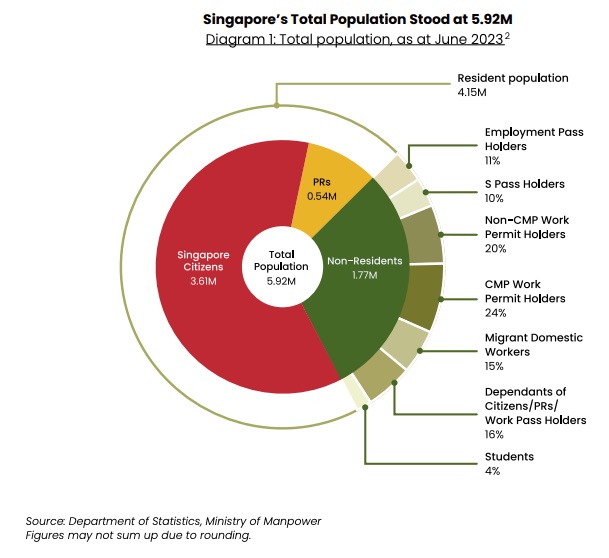

The citizen population increased by 1.6 per cent, from 3.55 million to 3.61 million, while the number of PRs rose by 3.7 per cent from 0.52 million to 0.54 million between June 2022 and June 2023. With the easing of Covid-19 travel restrictions, more citizens and PRs living overseas returned to Singapore, increasing the resident population of citizens and PRs in the country.
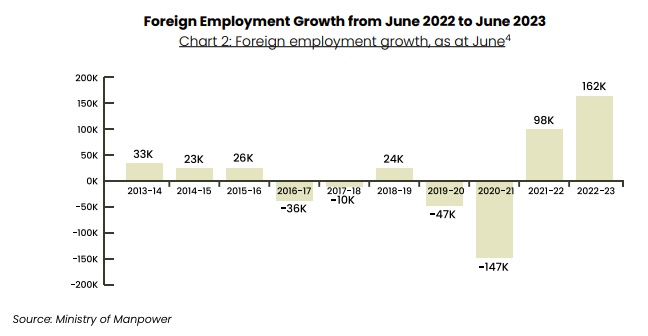

Meanwhile, the non-resident population grew 13.1 per cent from 1.56 million to 1.77 million during the same period. The increase in the non-resident population was mainly due to foreign employment growth in Singapore from June 2022 to June 2023, says the report. The increase was seen across all pass types. The largest increase was in the number of work permit holders in the construction, marine shipyard, and process sectors, as contractors hired more workers to carry out projects delayed by Covid-19. The remaining increases in foreign employment were spread across various sectors as firms filled positions vacated by non-residents during the pandemic.
There was an 11 per cent increase in employment pass holders, 10 per cent in S Pass holders, 20 per cent in Non-CMP Work Permit holders, and 24 per cent in CMP Work Permit holders. CMP Work Permit holders are those employed in construction, marine shipyard and process sectors. There was also a 15 per cent increase in migrant domestic workers. The number of dependants of citizens, PRs and Work Pass Holders went up by 16 per cent while the number of students rose by 4 per cent.
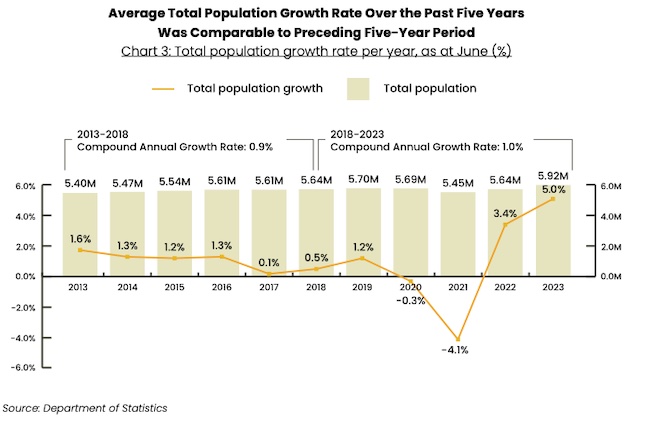

The 5 per cent increase in Singapore’s total population followed a 3.4 per cent rise in 2022. The two years of consecutive growth follow a decline in population during the Covid-19 epidemic. The population declined from 5.7 million in 2019 to 5.69 million in 2020 and 5.46 million in 2020 before picking up in 2021.
Over 23,000 new citizens, over 34,000 new PRs
“The pace of immigration continues to be measured and stable,” says the report. “In 2022, 23,082 individuals were granted citizenship and 34,493 individuals were granted PR. The number of citizenships and PRs granted in 2022 was slightly higher than in 2019 (pre-COVID). Due to travel restrictions and safe management measures during the COVID-19 pandemic, a number of approved applicants in 2020 and 2021 could not complete in-person processes for the grant of citizenship or PR. These applicants have since managed to complete the relevant processes and were granted citizenship or PR in 2022, thereby contributing to the higher numbers granted. About 5.5 per cent of the new Singapore citizens in 2022, or 1,280 of them, were children born overseas to Singaporean parents (“citizens by descent”).
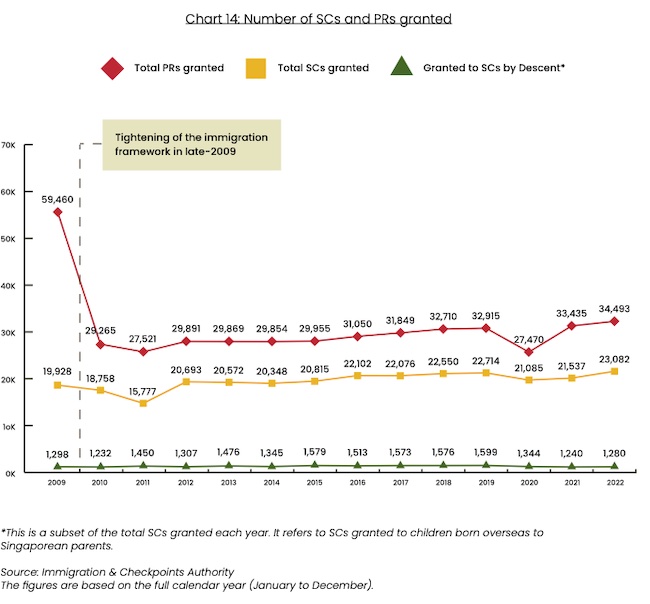

The number of citizenships granted in the last five years: 22,550 in 2018, 22,714 in 2019, 21,085 in 2020, 21,537 in 2021 and 23,082 in 2022.
The number of PRs granted in the last five years: 32,710 in 2018, 32,915 in 2019, 27,470 in 2020, 33,435 in 2021 and 34,493 in 2022.
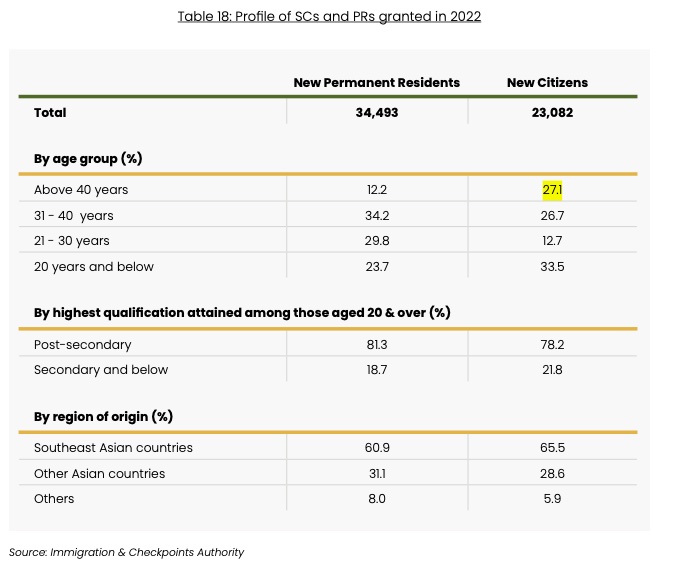

Southeast Asian countries accounted for 65.5 per cent of the new citizens and 60.9 per cent of the new PRs. Other Asian countries contributed 28.6 per cent of the new citizens and 31.1 per cent of the PRs. Just about 6 per cent of the new citizens and PRs came from other parts of the world.
Among the new citizens, 78.2 per cent had post-secondary qualifications, and so did 81.3 per cent of the new PRs.
More than seven out of 10 new citizens were below the age of 41. While 27.1 per cent of the new citizens were over 40, 26.7 per cent were between the ages of 31 and 40, 12.7 per cent were between 21 and 30, and 33.5 per cent were 20 years old or younger. Similarly, among the new PRs 12.2 per cent were over 40, 34.2 per cent were between the ages of 31 and 40, 29.8 per cent were between 21 and 30, and 23.7 per cent were 20 years old or younger. /TISG

